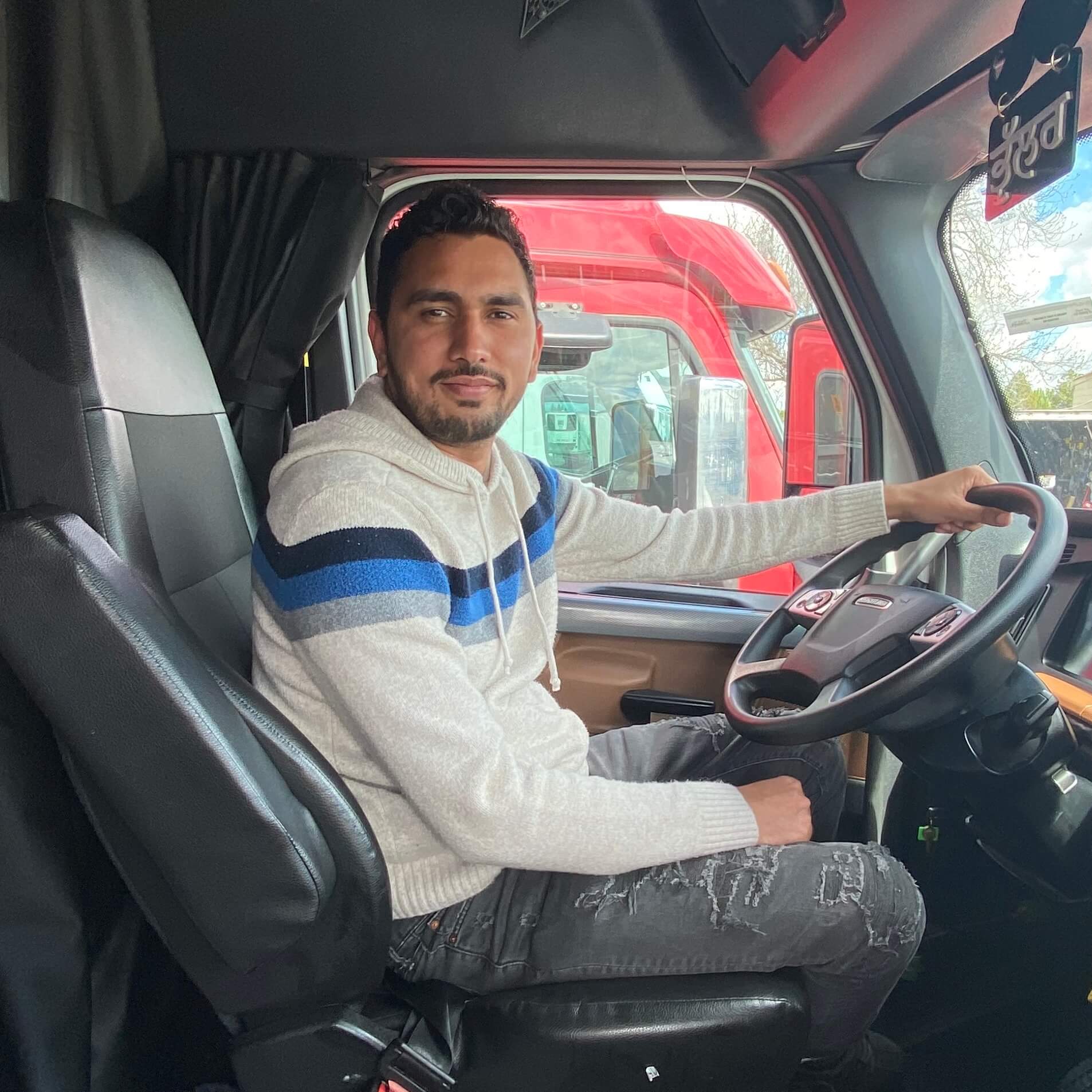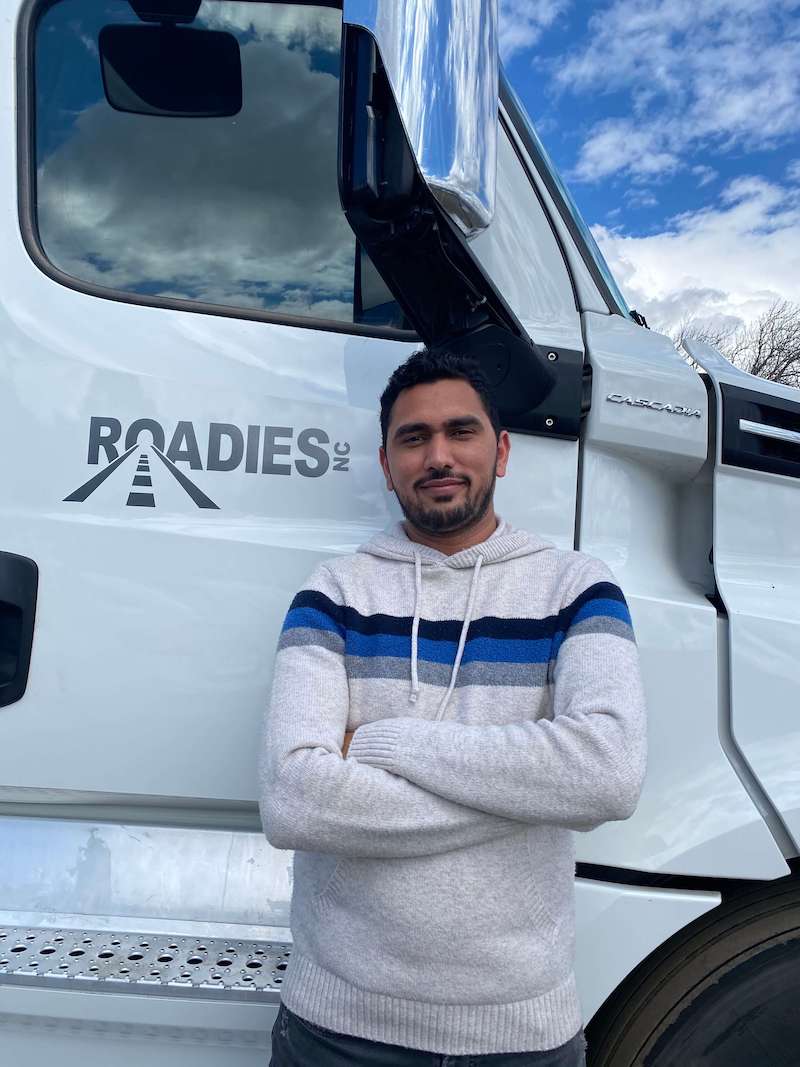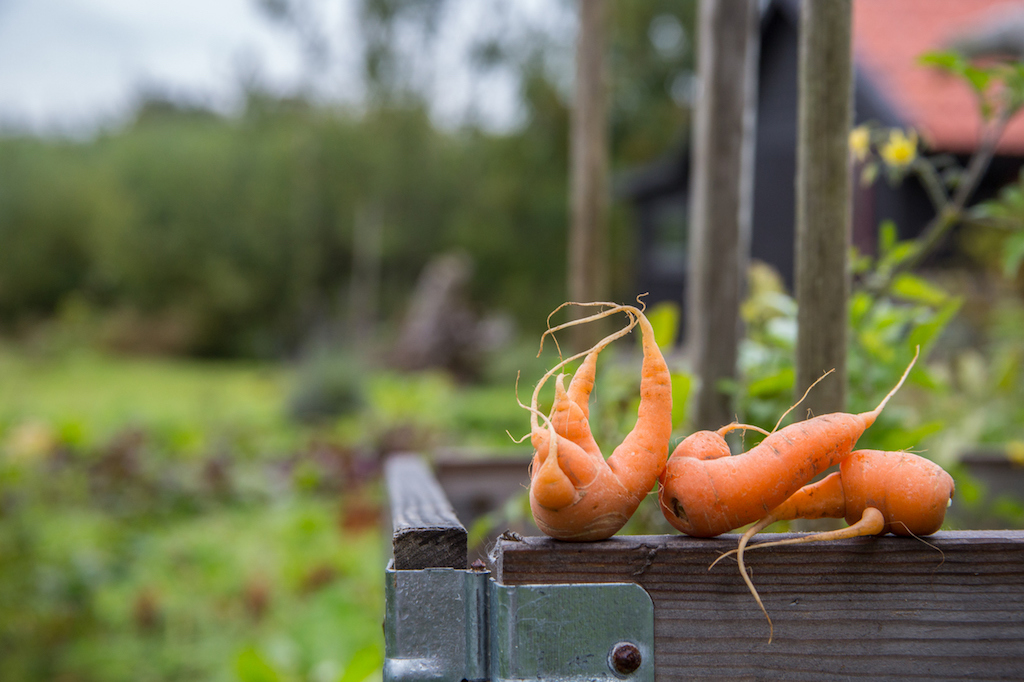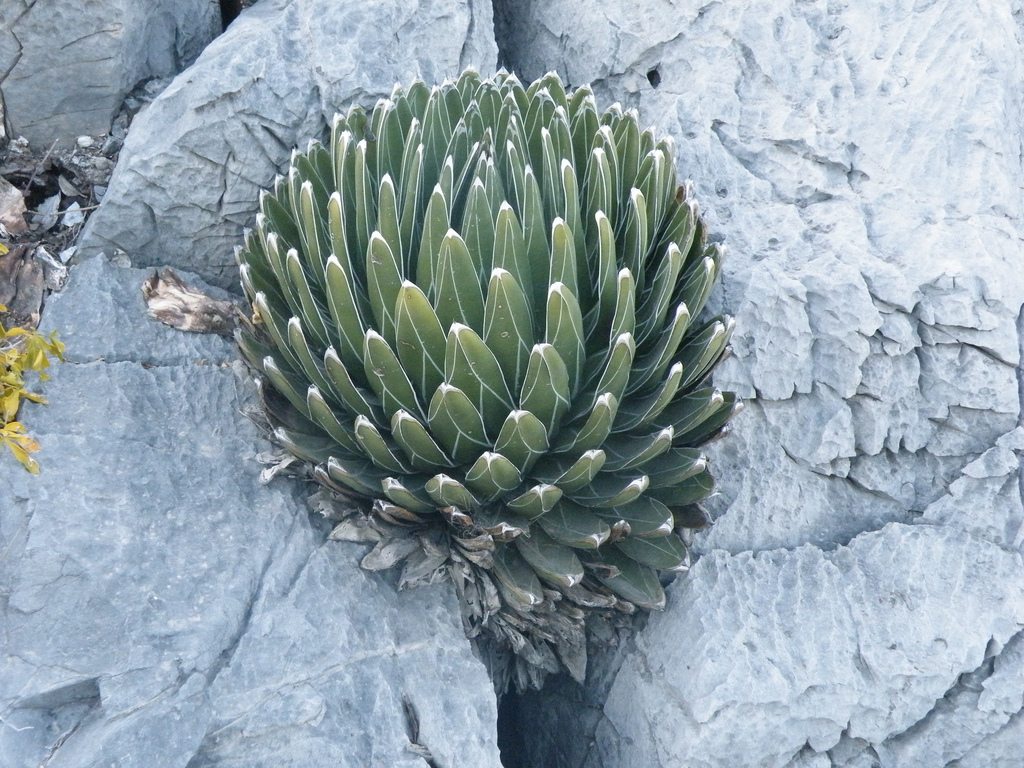
Jay Singh
“We are the ones delivering food to shelves. And if we stop, no one will have food.”
Think of the food supply chain, with countless links, invisible to most of us: Farm workers, processors, packers, rail cars, distributors and warehouses. Lose one piece and it falls apart. Mercifully, as a global pandemic sweeps the country, forcing millions of Americans inside, it’s still running. If it stops, we stop eating.
The Counter is seeking short essays about how Covid-19 has impacted American life through the lens of food. How have the pandemic’s emotional, physical, personal, and professional disruptions recast your daily routine, eating habits, and appetite?
Jay Singh, 29, is one small link in that chain. A resident of Bakersfield, California, he’s been a long-haul trucker for eight years. He first got the idea, he says, when he was working at a gas station, looking for better work. A typical job, he says, might involve driving up to Salinas, where he loads up lettuce and spinach, or to Tulare for dairy products. He then hauls the goods wherever they’re wanted—often to warehouses owned by companies like Walmart, Costco or Little Caesars.
He usually drives from California to Texas, but sometimes goes as far as Pennsylvania. Along the way, he subsists on fast food, cleans up in public bathrooms, and sleeps in the parking lots of state-owned picnic areas. But as the country enters a period of lockdown, his normal routine has started to become impossible. Restaurants have shut their doors. All-night truck stops are daytime-only. And states are closing public parks, including the rest stops that provide crucial respite throughout his journey.
I talked to Singh hours before he got back in his Freightliner Cascadia truck and hit the road—this time, for a six-day round trip to an H-E-B warehouse in Temple, Texas, to deliver lettuce, spinach and other produce. His story has been edited and condensed.
—Sam Bloch
—
Jay Singh: I work for Roadies, Inc., hauling produce from California to Texas and back. Truck drivers are worried about what’s going on, but the worst part—what I’m facing today—is that truck stop restaurants are closed. It’s hard to get food, and they’re closing the washrooms. And where we’re delivering the produce, they don’t let us use their restrooms, either. Day by day, it’s getting worse. Our families are telling us to stop, but we cannot stop. Because we are the ones delivering food to shelves. And if we stop, then these big stores will stop. And no one will have food.
I bring lettuce from California shippers to Walmart, our main customer. The shippers aren’t big names—Taylor Farms, Andrew Smith in Salinas, Earthbound Farms. I also pick up oranges from Sun Pacific in Bakersfield. We deliver lettuce all over Texas—Dallas, Austin, San Antonio, Houston, all over. We take it to the warehouses and Walmart supplies the local stores from there.
Maybe 20 days ago, work was pretty heavy. But in the last four days, orders have gone down, I’d say, around 20 percent. All these restaurants are closed. So if they don’t order anything from the big wholesalers, then they don’t give orders to us. I get paid 50 cents a mile—whatever I drive in a week, that’s how I get paid. If the pizza places are closed, and don’t order as much cheese, then I’ll be sitting at home for three days, waiting for the next shipment to come.
“The truck stops don’t want us. So where do we go?”
I came home three days ago. When I was in El Paso, Texas, the Flying J restaurant was closed. There’s a McDonald’s right down the street—I went there. But they were only open for drive-through. I can’t drive my truck through—it’s pretty low. So I had to give my money to another car driver, and ask them to buy my food for me. It was two McChickens and a vanilla shake.
All the receivers, like Walmart, they don’t let you use their restrooms anymore. Before, it was open to all truck drivers. I tried to explain it to them: The truck stops don’t want us. You guys don’t let us use the restroom. So where do we go? They use the same line: It’s a company policy, because of coronavirus.

Jay Singh
Truckers like Jay Singh keep groceries on the shelves at supermarkets. And yet, for him, restrooms, food, and places to sleep are in short supply.
I’ve been more successful stopping at mom-and-pop stores. If there’s a truck stop with their restroom shut, I can go across the street to a 7-Eleven, or a Valero or Chevron. Those are privately owned stores. I’ve stopped at some small places too—a Pilot truck stop in Arizona, Bombay Grill in Gallup, New Mexico. They were pretty cool.
I have a bunkbed behind the driver’s seat, and sleep in my truck every day. A few weeks ago, I had a trip to Pittsburgh, Pennsylvania for C&S Wholesale, and the rest areas and picnic stops were shut down, due to coronavirus. Now, finding a place to stop after 5:00 p.m. is chaos. If you stop at 9:00 or 10:00, there’s a very small chance of finding parking. So to get a parking spot, I just took an exit, and found a place off the exit ramp. I just park my truck in the dirt and sleep.
Pennsylvania and Ohio shut down the rest stops first, but now it’s in every state. I’m starting another trip today—I’m going to see how Arizona and New Mexico are doing. I’ve heard from other drivers that their rest areas are less maintained—they send a janitor or maintenance guy once a week. They are getting closed. There’s less traffic.
“I just park my truck in the dirt and sleep.”
I have a delivery in Temple, Texas. The receiver is H-E-B. I’m delivering mixed produce—lettuce, spinach, everything. My company sent someone to Salinas to pick up the shipment and bring my trailer to Bakersfield. I have to find a place by 5:00 p.m. That’s what the other drivers tell me. We have 11 hours to drive. I usually start my day around 8 in the morning, and now I’ll start at 4, because there’s less parking.
I won’t drive many miles today. I’m planning on stopping at the Arizona border—Needles, California. It’s a small town. I might not find a truck stop, but I won’t have any trouble finding a place. I can park anywhere—in the dirt. I’ll be asleep by around 8:00. And then I’ll start tomorrow at 4:00. The next stop is Albuquerque. I’ll have trouble finding parking there. And then it’s onto some place near Temple.
My fellow drivers are scared to go out on the road. They don’t want to go through this. It’s a hard time. There are people who don’t want to drive. I’d say five percent are worried and scared and don’t want to drive. And then 95 percent of people are still working. I’m part of that 95 percent who’s still working.



